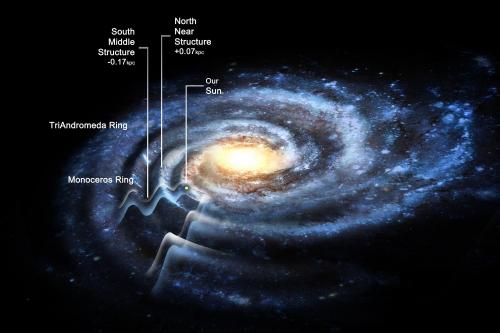
- The research, conducted by an international team led by Rensselaer Polytechnic Institute Professor Heidi Jo Newberg, revisits astronomical data from the Sloan Digital Sky Survey which, in 2002, established the presence of a bulging ring of stars beyond the known plane of the Milky Way.
- In essence, what they found is that the disk of the Milky Way isn’t just a disk of stars in a flat plane—it’s corrugated. As it radiates outward from the sun, we see at least four ripples in the disk of the Milky Way. While we can only look at part of the galaxy with this data, we assume that this pattern is going to be found throughout the disk.
- Importantly, the findings show that the features previously identified as rings are actually part of the galactic disk, extending the known width of the Milky Way from 100,000 light years across to 150,000 light years.